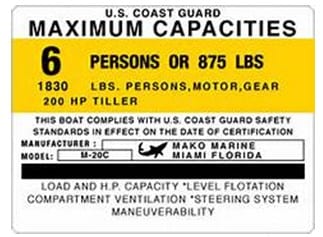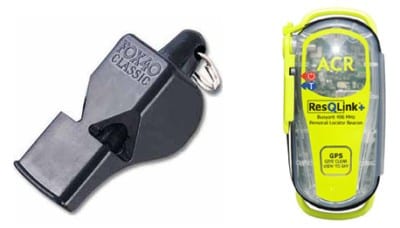 By Bob Currie, Vessel Examiner
By Bob Currie, Vessel Examiner
United States Coast Guard Auxiliary Flotilla 081-06-08A
A perfect storm is an event in which a rare combination of circumstances drastically aggravates the event. The term “perfect storm” is nearly synonymous with “worst case scenario,” although “worst case scenario” is usually used hypothetically, while “perfect storm” usually describes a real-life event. This column will address a real-life incident that happened recently on one of our area lakes. The incident resulted in loss of life, and the events leading up to that loss are quite pertinent to recreational boaters.
per•fect storm
noun
• a particularly bad or critical state of affairs, arising from a number of negative and unpredictable factors.
Flotilla 081-06-08 is based at Coast Guard Station Galveston. The Coast Guard Auxiliary is the uniformed civilian component of the US Coast Guard and supports the Coast Guard in nearly all mission areas. The Auxiliary was created by Congress in 1939. For more information, please visit www.cgaux.org.
The Incident
Three fishermen were in a boat that was passed by another boat. The wake from the passing boat capsized the boat the three fishermen were in. The three men swam for shore. On the way to shore, one fisherman became incapacitated and stopped breathing. Although his friends began CPR, the fisherman died.
Rules Violations Leading to the Cause of the Accident:
None. There were no rules or regulations violated in this accident. Rather, a perfect storm of circumstances came together to cause the accident. That is what makes this incident so chilling. Even if you do things right, the totality of the circumstances can be enough to tip the scales toward disaster. In this case, the Total Person Capacity of the fishing boat was not exceeded, the passing boat did not operate so as to endanger lives or property, all persons were wearing life jackets, and no drugs or alcohol were involved. Yet, the boat did capsize, and a person died. The Coast Guard accident investigation is not complete, but we can look at the circumstances as they are known and formulate a method of operation that would tend to make us more prepared for such a perfect storm of events.
Number of Persons Capacity Plate Not Exceeded
We know that the fishing boat’s Number of Persons Capacity was not exceeded. It is not known at this time whether the Maximum Weight Capacity was exceeded. We have talked about this before, but the message bears repeating. An overloaded boat has been the cause of many bad incidents on the water. The capacity plate, usually affixed to the transom, gunwale or on the center console of a recreational boat, contains important information about the limits under which the vessel should operate to ensure safety.  It includes the maximum horsepower, the maximum number of persons and the maximum weight that may be carried (equipment and passengers combined). You may be tempted to take the number of persons on the capacity plate as the actual boat capacity, but if you take the time to do the math you will find that if you divide the “Persons” figure into the weight capacity, then the average person allowed for by the capacity plate weighs only around 150 pounds. You should always consider both the number of persons capacity and the weight capacity and be governed by the most restrictive of the two. How many of you know the weight of your motor and the gear you bring aboard? The second weight capacity figure on the capacity plate is the total weight of persons, motor and gear. You should also keep that figure in mind when loading your boat with persons and gear. Picture in your mind, if you will, the scene from “Jaws” where all the boats are headed out to catch the great white shark, and most of the boats are grossly overloaded. The Richard Dreyfus character remarks, “They are all going to die.”
It includes the maximum horsepower, the maximum number of persons and the maximum weight that may be carried (equipment and passengers combined). You may be tempted to take the number of persons on the capacity plate as the actual boat capacity, but if you take the time to do the math you will find that if you divide the “Persons” figure into the weight capacity, then the average person allowed for by the capacity plate weighs only around 150 pounds. You should always consider both the number of persons capacity and the weight capacity and be governed by the most restrictive of the two. How many of you know the weight of your motor and the gear you bring aboard? The second weight capacity figure on the capacity plate is the total weight of persons, motor and gear. You should also keep that figure in mind when loading your boat with persons and gear. Picture in your mind, if you will, the scene from “Jaws” where all the boats are headed out to catch the great white shark, and most of the boats are grossly overloaded. The Richard Dreyfus character remarks, “They are all going to die.”
With this in mind, it is important to take both the number and weight capacities in mind and not load the boat too close to capacity. In addition, all those on board should be made aware of the potential of the boat to roll when persons move about the boat, and due care should be taken when shifting position or standing up in the boat. While a boat might be perfectly stable when all occupants remain seated, it may become less stable when persons shift positions or do not distribute their weight evenly. The Capacity Plate on my boat says 4 persons. I will never have 4 persons aboard my boat, and will only have 3 people aboard on very calm waters.
No Rules of the Road Violation
Rule 6 says that you must judge “safe speed” for yourself. In this case the fishermen said the boat that passed them passed at what they judged to be a safe speed and at a safe distance away.
Safe Speed (Rule 6) “Except where speed is restricted by regulation or the waterway and is marked by a “No Wake” or “slow speed” aid, you must judge “safe speed” for yourself, taking into account visibility, vessel traffic, your boat’s ability to maneuver, background lighting at night, draft in relation to depth of water, and the weather conditions (including wind, sea, current and proximity to hazards).”
However, the boat did capsize as a result of the wake from the passing boat, however small that wake may have been. The fishing boat was stationary, and that in itself may have increased the affect of the wake if the wake hit the fishing boat broadside. As a boater, I recommend that you use this incident as a reminder to give a wider berth to stationary vessels and consider the position of the boat to be passed in relationship to your wake. If you have adjustable trim for your motor, trim your motor to make the smallest wake possible, especially when there is a lot of nearby vessel traffic that could be affected by your wake. Boats designed to produce heavy wakes for wakeboarding should only be operated in wide open waters rather than in close vicinity to other boats. If you plan to anchor your boat to fish or swim or simply just stop for awhile, try not to stop or anchor where the wakes from other boats crisscross. This leads to instability. Rather, anchor away from the middle of the lake or channel where boat traffic is light.
All Persons Were Wearing Life Jackets
All persons aboard the fishing boat were wearing Coast Guard Approved life jackets, also called PFDs (Personal Flotation Devices). The accident could have been worse had nobody been wearing a life jacket. When a boat capsizes, there is no time to don a life jacket. If you are not wearing one before the boat capsizes, you will not be able to locate and don one after the boat capsizes. The Coast Guard recommends that you remain with your boat rather than trying to swim to shore, however. Swimming takes a lot of energy, even for a person in great condition.

Another thing you can do to facilitate rescue is to attach a whistle to each life jacket. A good whistle such as the Fox40 can be purchased for less than five dollars. If your boating takes you far from shore, you should consider renting or purchasing a PLB (Personal Locator Beacon). Many PLBs, designed to attach to the life jacket, are water-activated, and send an emergency distress signal to the Coast Guard. In this case, a PLB might not have helped, as the lake involved is fairly small, but the Fox40 whistle might have been useful in calling for help from nearby boaters, especially if the fishermen had remained close to the capsized boat.
In Summary
I hope that the events of this tragic accident help others to understand how the totality of the circumstances can operate to create a perfect storm disaster, even when you do everything right. Do not try to operate at the capacity of the boat or the physical capacity of the individual, as such pushing of the limits could be enough to tip the scales from safe operation to boating accident. Instead, operate within a margin of safety based on the knowledge of your boat’s characteristics and the knowledge of your own physical capacity as well as the physical capacities of your passengers. The Coast Guard recommends a fuel conservation method in which you use no more than one third of your fuel going out and use the remaining two thirds to get home safely. Maybe we should take this line of thinking to set limits to our own capacities when operating our boats.
For more information on boating safety, please visit the Official Website of the U.S. Coast Guard’s Boating Safety Division at www.uscgboating.org. Questions about the US Coast Guard Auxiliary or our free Vessel Safety Check program may be directed to me at [email protected]. I am available to perform free Vessel Safety Checks, and I will come to your location to perform them. SAFE BOATING!
[5-21-2018]

 Posted in
Posted in 























